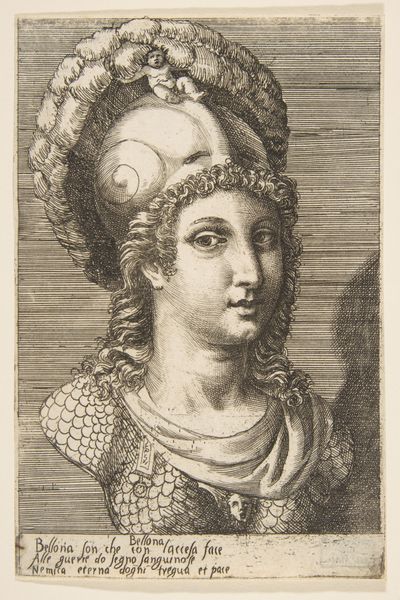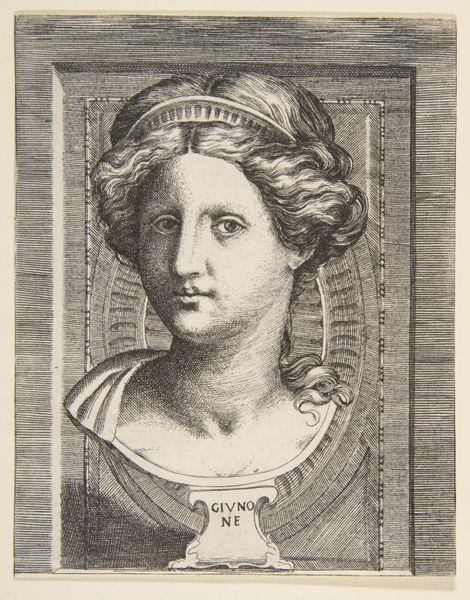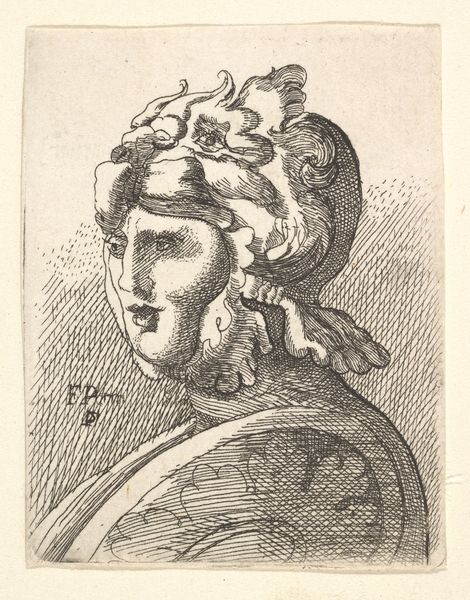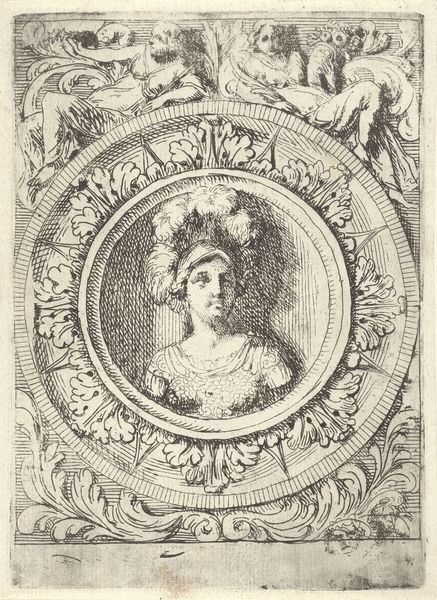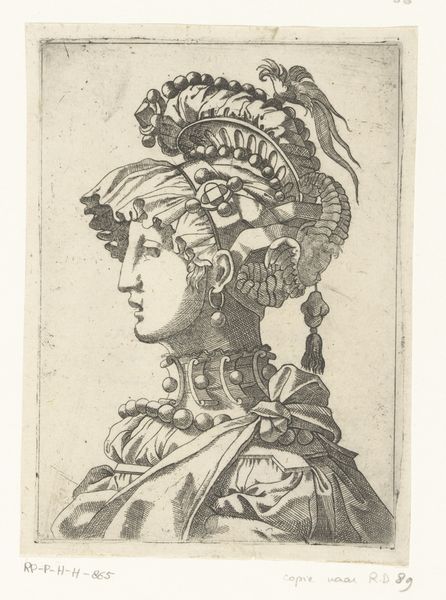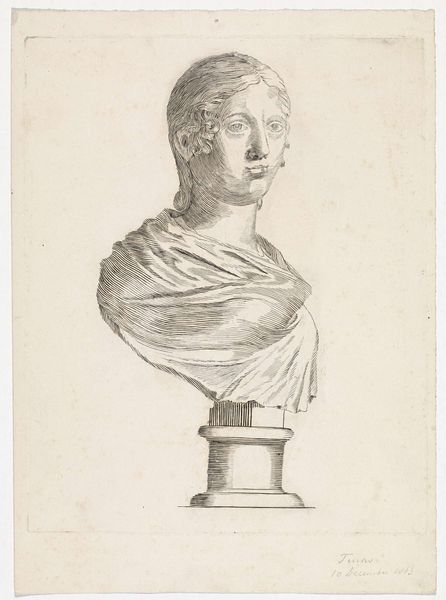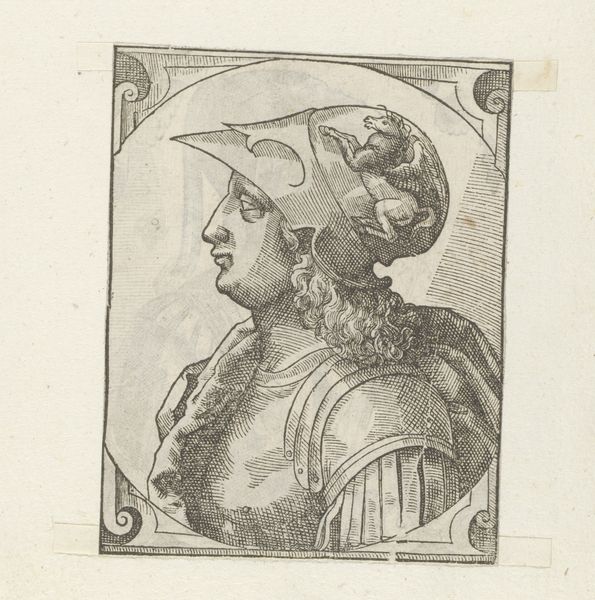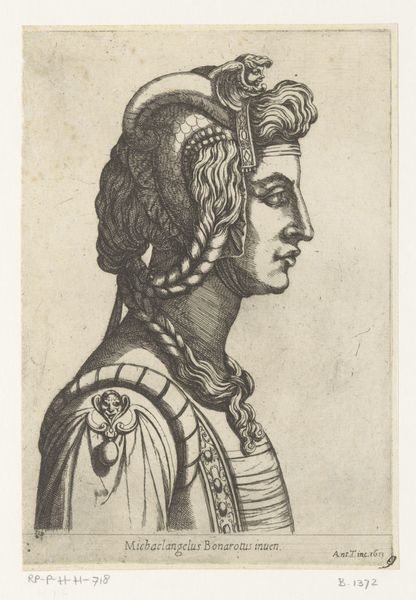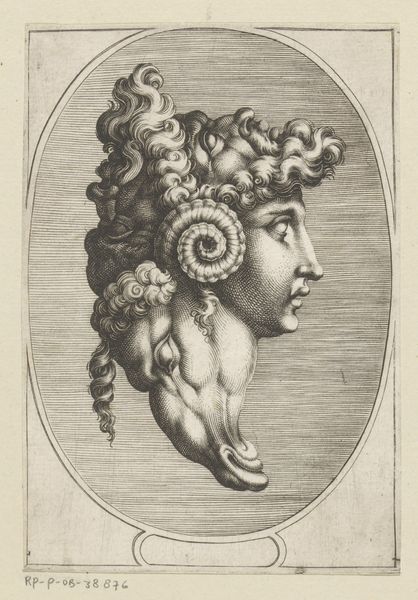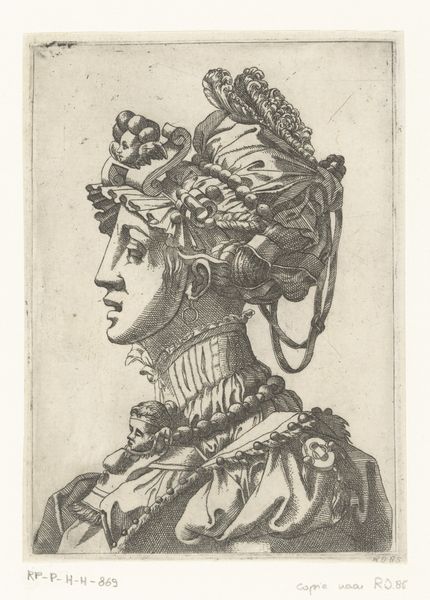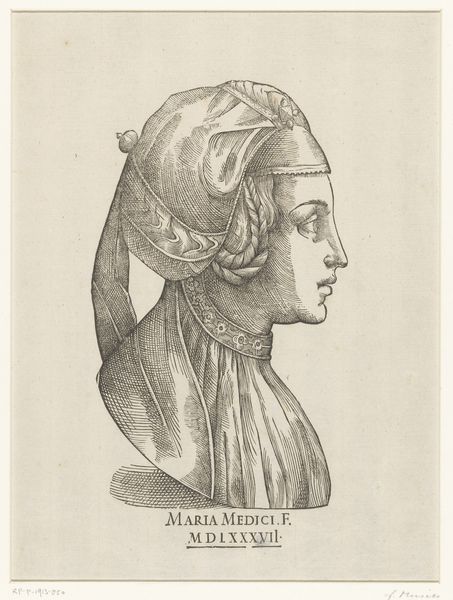
drawing, print, engraving
portrait
drawing
figuration
romanesque
portrait drawing
italian-renaissance
engraving
Dimensions: sheet: 6 1/16 x 4 7/16 in. (15.4 x 11.2 cm)
Copyright: Public Domain
Editor: Here we have Giulio Bonasone's "Bust of Hercules and Dejanira," an engraving and print from around 1526 to 1536. It’s quite striking how they're depicted together in this almost conjoined way, sharing a single bust. What do you make of it? Curator: For me, it's about the physical labor involved in creating the engraving, and how that manual process informs our understanding of Hercules and Dejanira's relationship. Consider the time and skill it took to carve those fine lines into the metal plate. It becomes a commodity, right? Multiplied through the printing press, circulated, consumed. Editor: I hadn’t really thought of it that way – more as a reproduction… Curator: Exactly, and what is being reproduced? Not just the image, but the idealized, classical notion of heroism and beauty which at this time would be purchased as a signifier of personal cultivation. How is this serving its social moment through making such images available to more of the public? Editor: That makes me consider what the labor of art-making signifies within Renaissance society – and the choice to represent figures from classical myth, not religious iconography as one might expect... Curator: It’s fascinating how Bonasone leverages classical imagery to appeal to humanist interests. Think about who this print would be made for – to show one’s high cultivation. Consider its labor-intensive production versus how this artwork, through distribution and access, could reshape societal hierarchies of its own. What is being sold and to whom, but also who makes it, and with what resources available? Editor: I’m seeing a different story here now – thank you. Curator: The pleasure is all mine. It's these sorts of close considerations that provide richer contexts for older artwork to give it renewed social agency, after all.
Comments
No comments
Be the first to comment and join the conversation on the ultimate creative platform.
